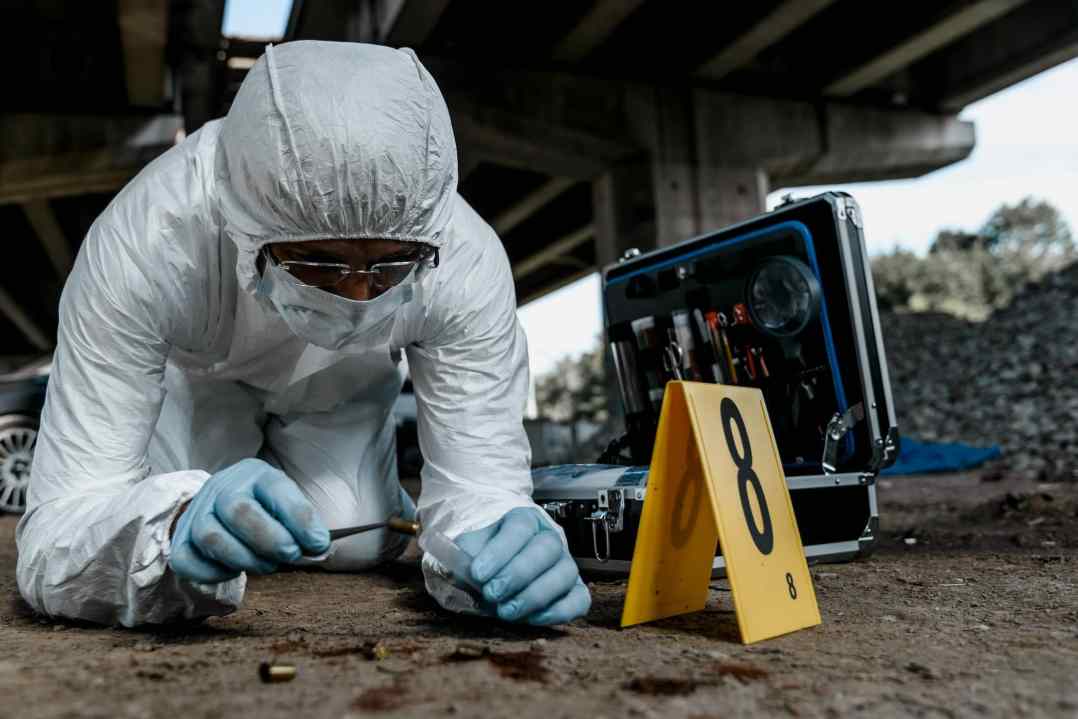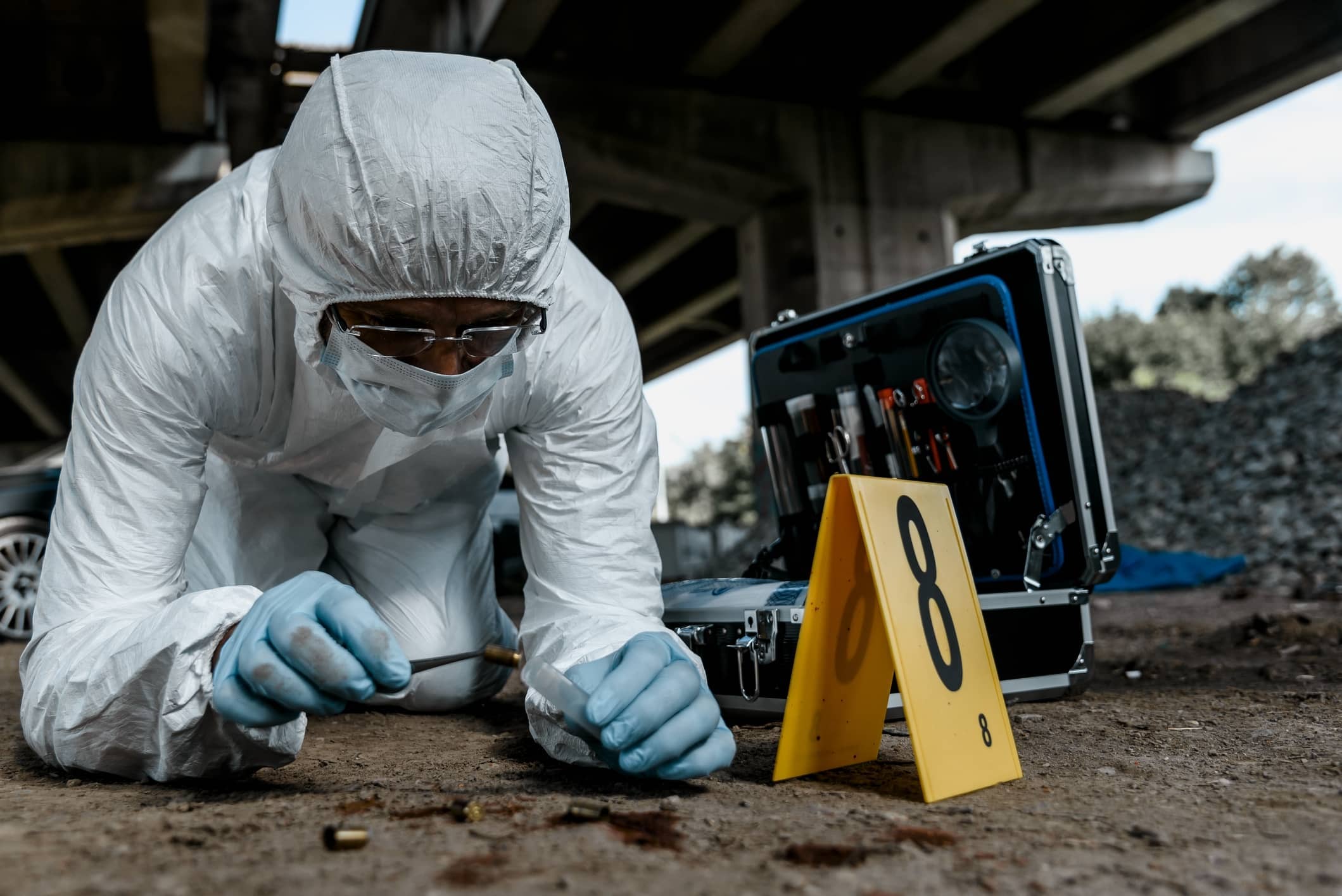I grew up in the golden age of forensic science, at a time when expert witnesses were becoming celebs, each with their special little area of crimebusting know-how. The papers were full of excited talk about hair microscopy, ballistics and fibre analysis. Crime scene investigators were hot as pop stars.
My brother and I had a nanny with a passion for gore. She wasn’t interested in me as a rule, but I could always hold her attention with a nice chat about blood spatter patterns. We discussed what you could tell from the trajectory of arterial spray or the shape of a drip. Over in America, Herbert MacDonell was the undisputed Blood Spatter King – I think he might have even invented it as a discipline. He appeared regularly on TV with his array of droplet charts, explaining, via PowerPoint, that a round splat meant a vertical drip and that a flatter more tear-shaped droplet meant blood sprayed forcefully at an angle. Herbert was, in his day, known as the modern Sherlock Holmes and was so pleased with the idea that he wore a deerstalker hat.
Each country seems to favour a different forensic science. In England, I’d say it’s the polygraph test. In the mid-1920s Agatha Christie wrote them into The Secret of Chimneys. ‘They put India-rubber bands round your arm then reconstruct the crime and make you jump,’ explains Lord Caterham. By the time I was a teenager, it was near compulsory for all TV cop shows to feature regular lie-detector tests: a close-up of the sweating suspect, then another of the sudden spiking of the polygraph needle.
What did it all mean? Who knew? Who needed to know? We trusted the science. The slapdash days of Starsky and Hutch were over. Men and women in lab coats had taken charge and soon, surely, crime would be a thing of the past.









Comments
Join the debate for just £1 a month
Be part of the conversation with other Spectator readers by getting your first three months for £3.
UNLOCK ACCESS Just £1 a monthAlready a subscriber? Log in